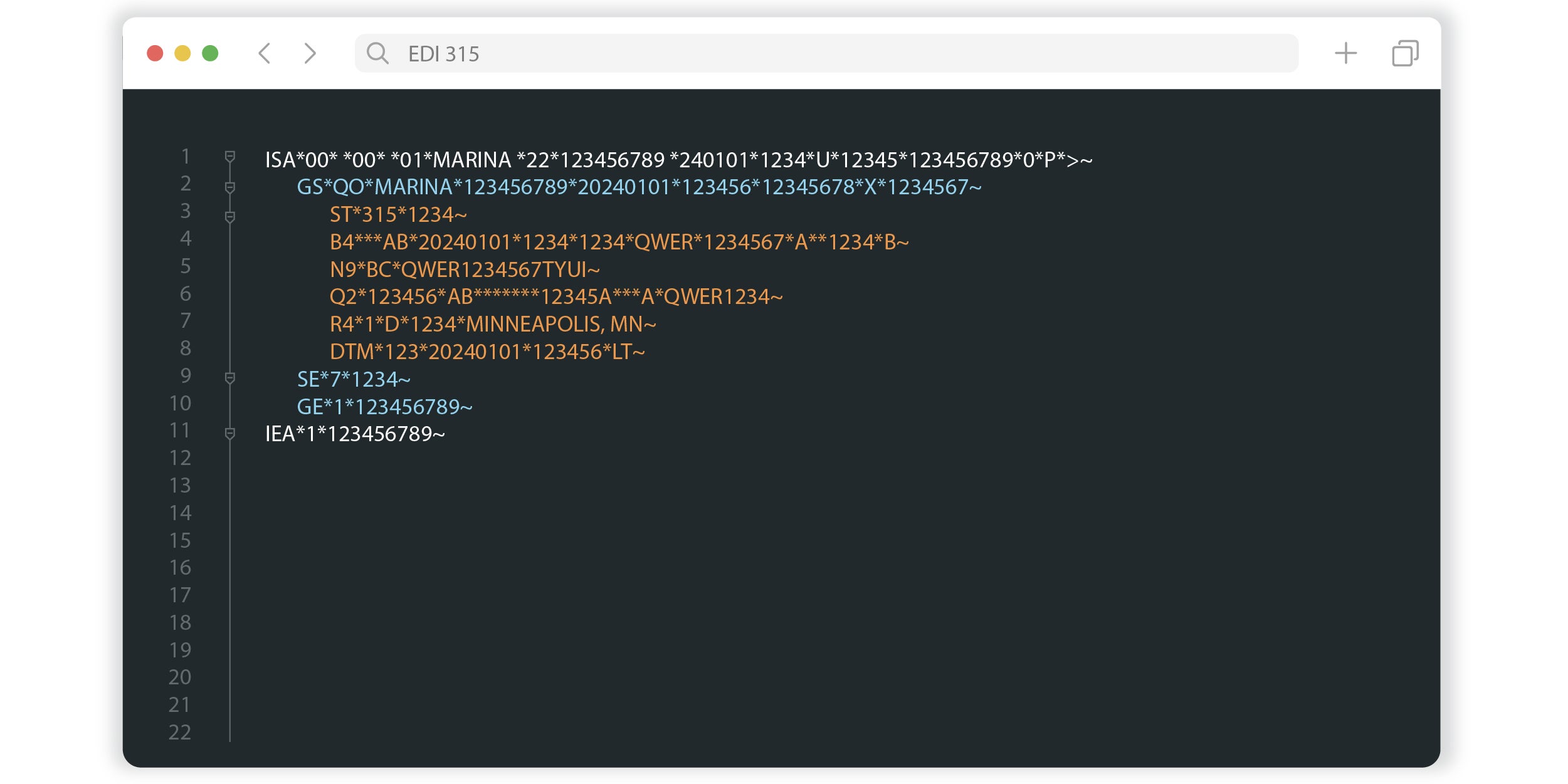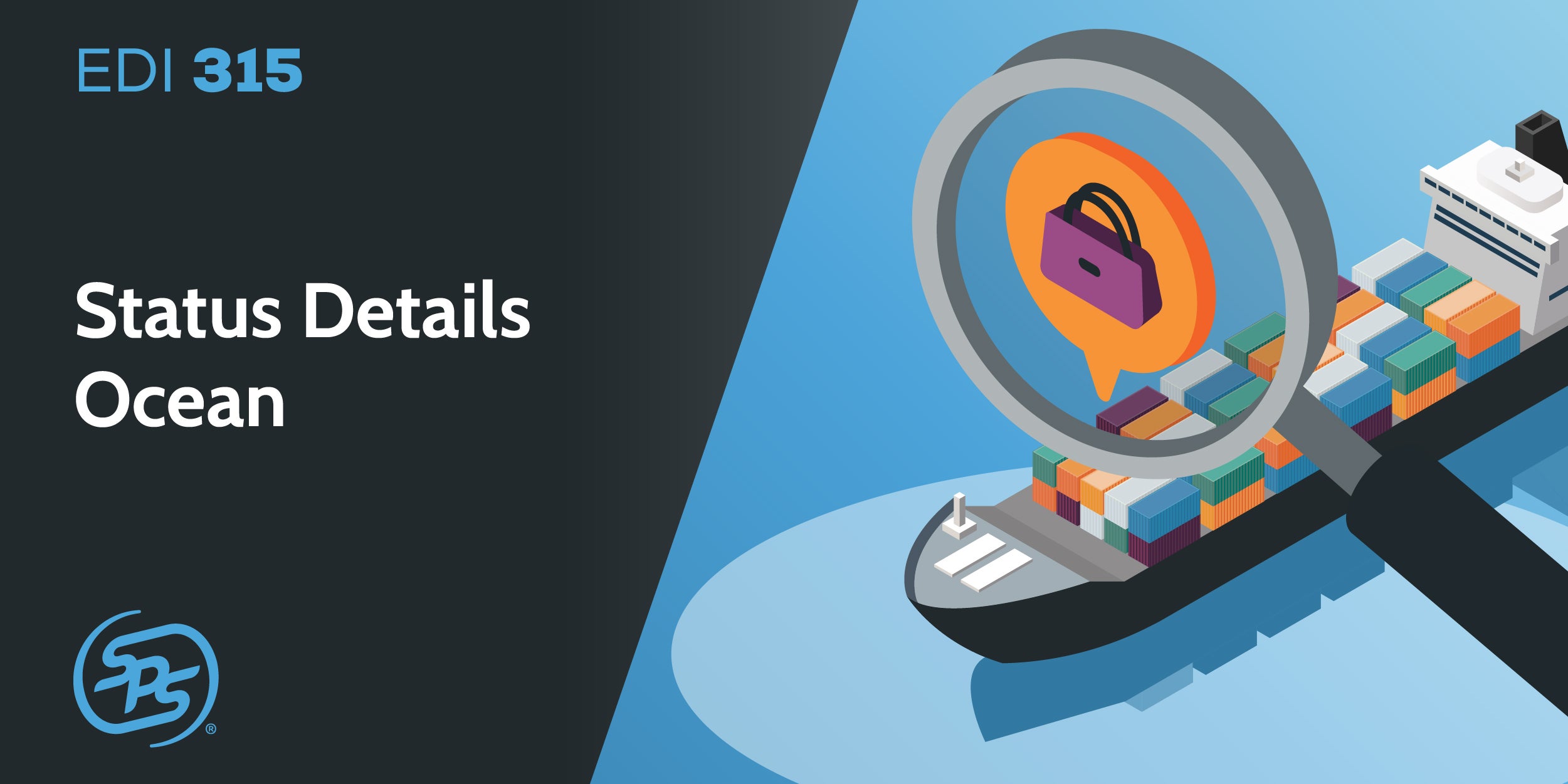The EDI 315 format
The EDI 315 is crucial for maintaining visibility and facilitating efficient communication across the supply chain, especially in international trade. This document ensures that all stakeholders, from shipping lines to consignees, have access to timely and accurate information regarding the movement and status of their shipments.

Here’s a general outline of the structure for the EDI 315 document:
B4: Beginning segment for inquiry or reply
N9: Reference identification
Q2: Status details (ocean)
SG: Shipment status
R4: Port or terminal
DTM: Date/time reference
How is the EDI 315 used?
Status reporting:
The primary use of the EDI 315 document is to provide updates on various stages of the shipping process, including departure, arrival, customs clearance and delivery.
Tracking and visibility:
The EDI 315 enhances the tracking capabilities and visibility of ocean freight for all parties involved in the supply chain, including shippers, consignees, freight forwarders and customs brokers.
Event notification:
The EDI 315 provides notifications about specific events that may impact the shipment, such as delays, holds or transshipments, enabling stakeholders to make informed decisions.
Documentation and compliance:
This document serves as a digital record of the shipping status and events, which is essential for documentation, auditing and compliance purposes.
Benefits of using the EDI 315 Ocean Status Details
Improved operational efficiency:
Enhanced visibility and control:
Risk mitigation:
Cost savings:
Customer satisfaction:
Compliance and documentation:
Common issues regarding EDI 315
Problems with reference identification
Have you had issues in confirming accurate reference information, including shipment statuses, port/terminal locations from your customers?
Inaccurate port or terminal location
Are you spending too much time resolving these discrepancies that it’s impacting your business?
Missing header information
Is it a hassle to add/update Interchange control, functional group, and transaction set headers in your system by hand?
Automate EDI 315 Status Details (Ocean) with SPS Commerce

Managing ongoing X12 EDI 315 tasks can be complex and time-consuming. A full-service provider, like SPS Commerce, has an expert team that handles constant management of your EDI solution. The SPS team actively manages 9,000 changes from retailers each year.
Full-service EDI providers like SPS Commerce supply EDI technology and related staffing resources responsible for customizing, optimizing, and operating your EDI solution. We work directly with your trading partners to administer connectivity, setup, requirements, updates and support efforts.
We also assume ownership of understanding your trading partner requirements and making map changes. SPS Fulfillment proactively monitors and optimizes your solution to avoid errors and minimize data entry.
Are you interested in learning more about our EDI solution?
Additional EDI Resources
Enter a virtual library of information about EDI for suppliers, vendors and distributors to provide you with the product knowledge you need to power your business.
Ultimate List of EDI Transactions
Here are some of the most common documents and transactions that are supported through EDI automation.
Five Top EDI Documents to Automate
When you automate your most-used EDI documents, it can significantly cut down keystrokes and speed up processes.
EDI Glossary
Terminology including retail definitions, order management models, supply chain roles, software and distribution channels.
EDI for Suppliers & Vendors
Discover how leading vendor and supplier businesses are serving their customers better with EDI solutions from SPS Commerce.




